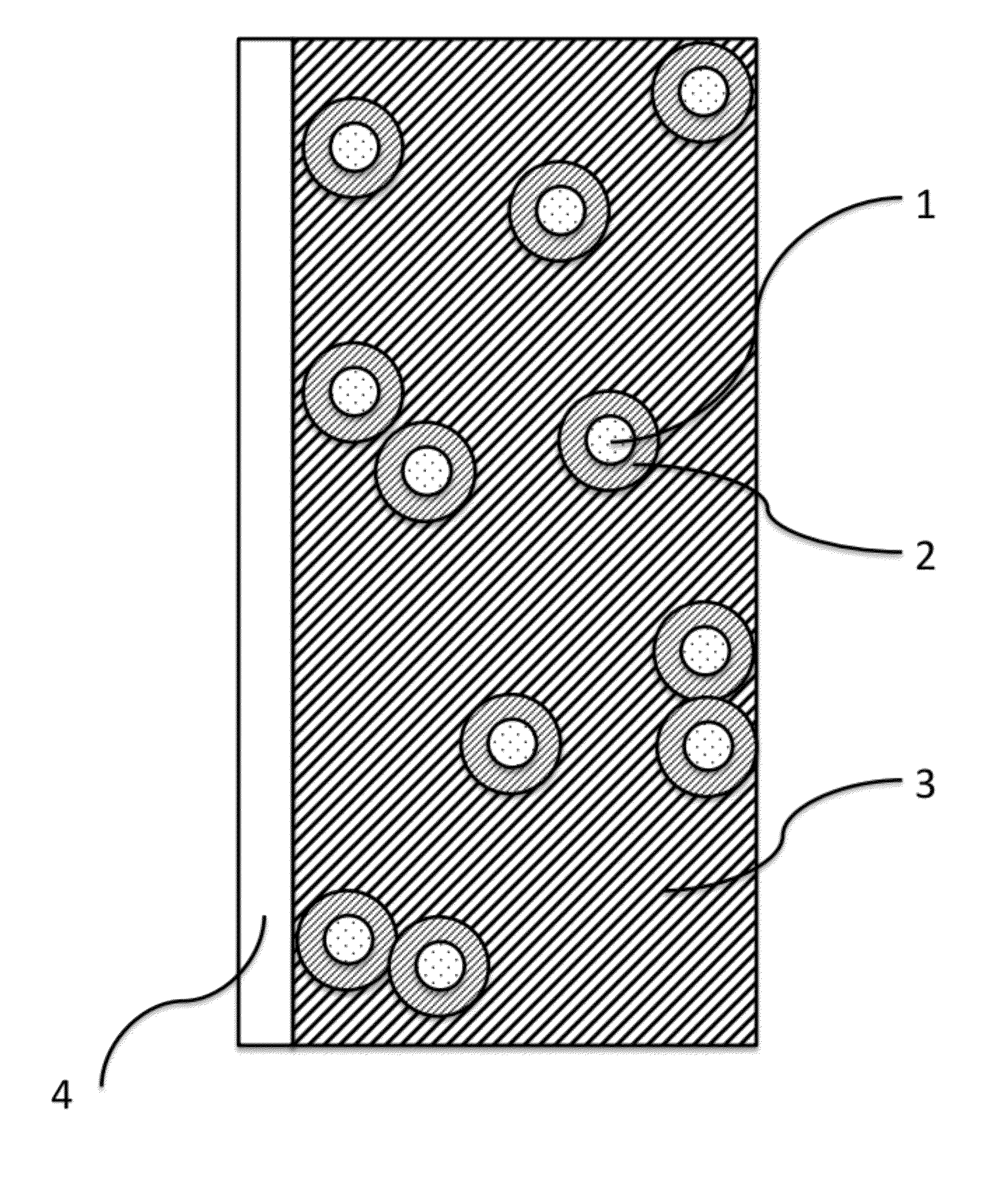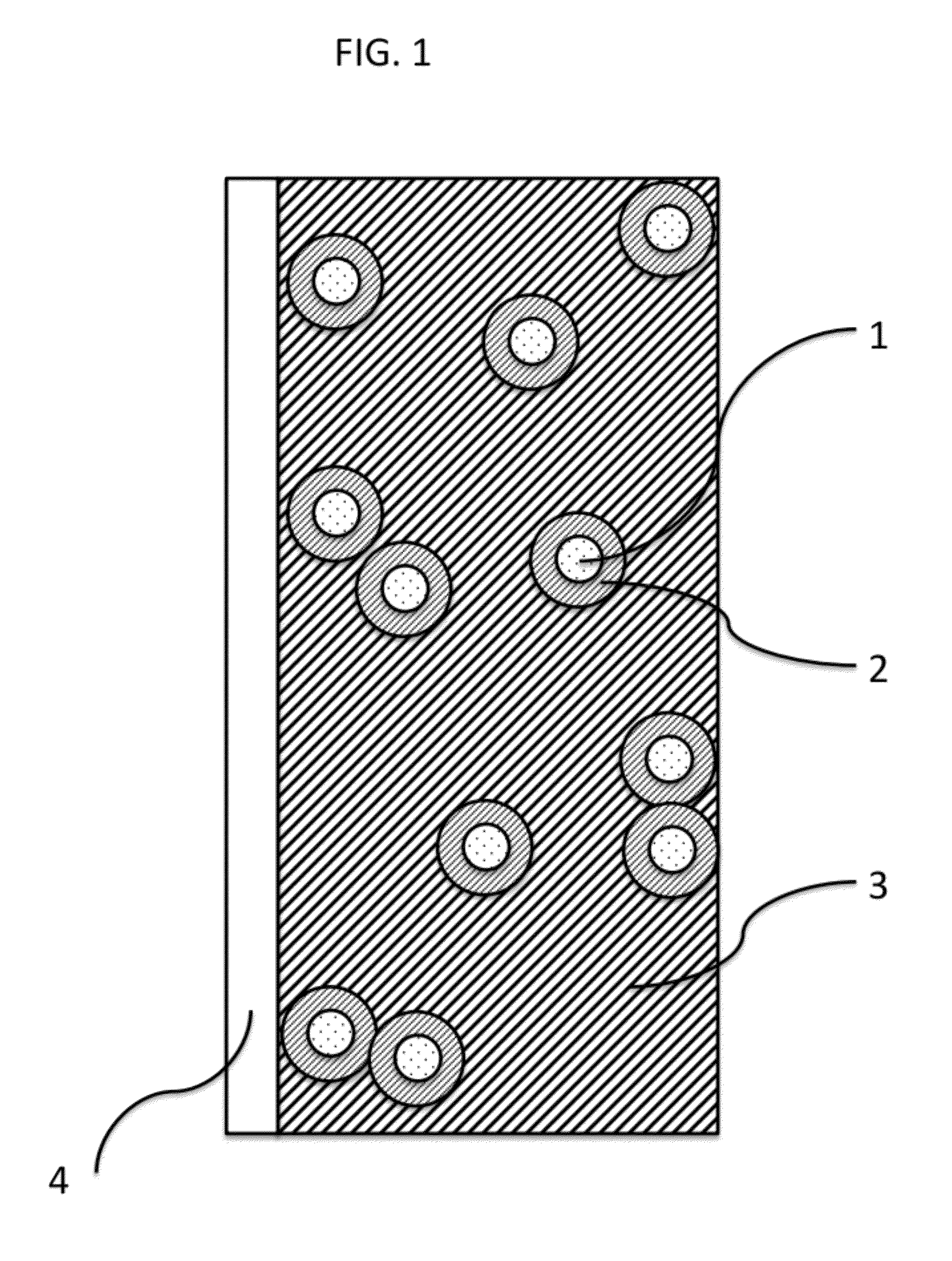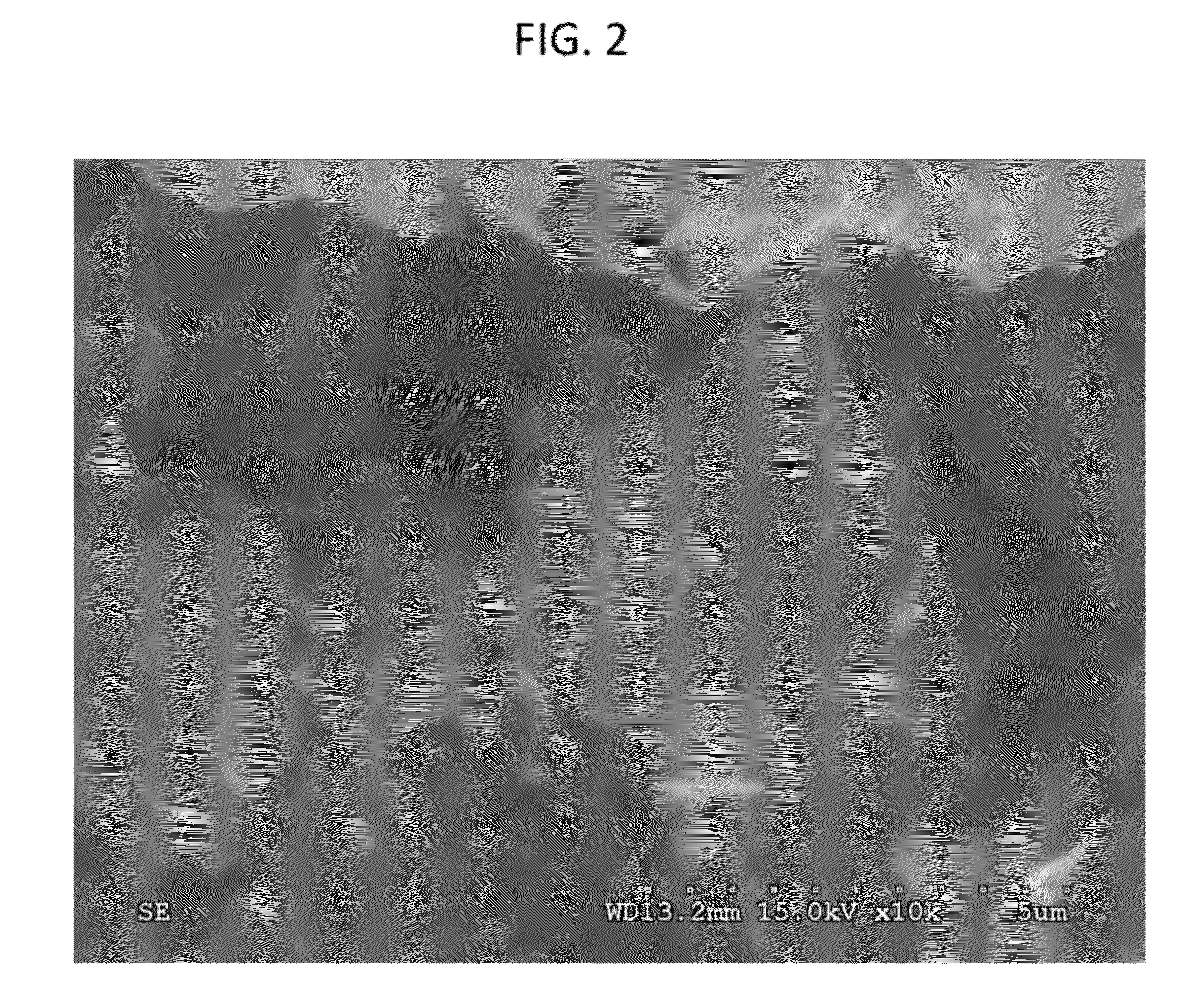Surface-modified silicon anode active material, method of preparing the same, and anode and lithium battery employing the same
a technology of active materials and surface modification, applied in the field of surface modification of silicon anode active materials, and methods of preparing the same, can solve the problems of limited success, silicon anode lithium ion batteries are not allowed to be used in practice, and the effect of limiting the success of the battery
- Summary
- Abstract
- Description
- Claims
- Application Information
AI Technical Summary
Problems solved by technology
Method used
Image
Examples
examples
[0025]While embodiments have been generally described, the following examples demonstrate particular embodiments in practice and advantage thereof The examples are given by way of illustration only and are not intended to limit the specification or the claims in any manner. The following illustrates exemplary details as well as characteristics of such surface modified silicon particles as the active anode materials for lithium ion batteries.
[0026]A liquid suspension mixture was prepared by dispersing 0.5 grams of silicon nanoparticles (average particles size below 100 nanometer) in 10 milliliters methanol. 1.25 milliliter 5% n(acetylglycyl)-3-aminopropyltrimethoxysilane solution in methanol was introduced into the suspension. A resulting mixture is heated at 75° C. with continuous agitation and sufficient ventilation until dry. The dried mix was cured at 120° C. for 12 hours afterwards. The dried mix was cooled to ambient temperature and then well mixed with 0.5 grams of carbon blac...
PUM
| Property | Measurement | Unit |
|---|---|---|
| diameter | aaaaa | aaaaa |
| diameter | aaaaa | aaaaa |
| size | aaaaa | aaaaa |
Abstract
Description
Claims
Application Information
 Login to View More
Login to View More - R&D
- Intellectual Property
- Life Sciences
- Materials
- Tech Scout
- Unparalleled Data Quality
- Higher Quality Content
- 60% Fewer Hallucinations
Browse by: Latest US Patents, China's latest patents, Technical Efficacy Thesaurus, Application Domain, Technology Topic, Popular Technical Reports.
© 2025 PatSnap. All rights reserved.Legal|Privacy policy|Modern Slavery Act Transparency Statement|Sitemap|About US| Contact US: help@patsnap.com



